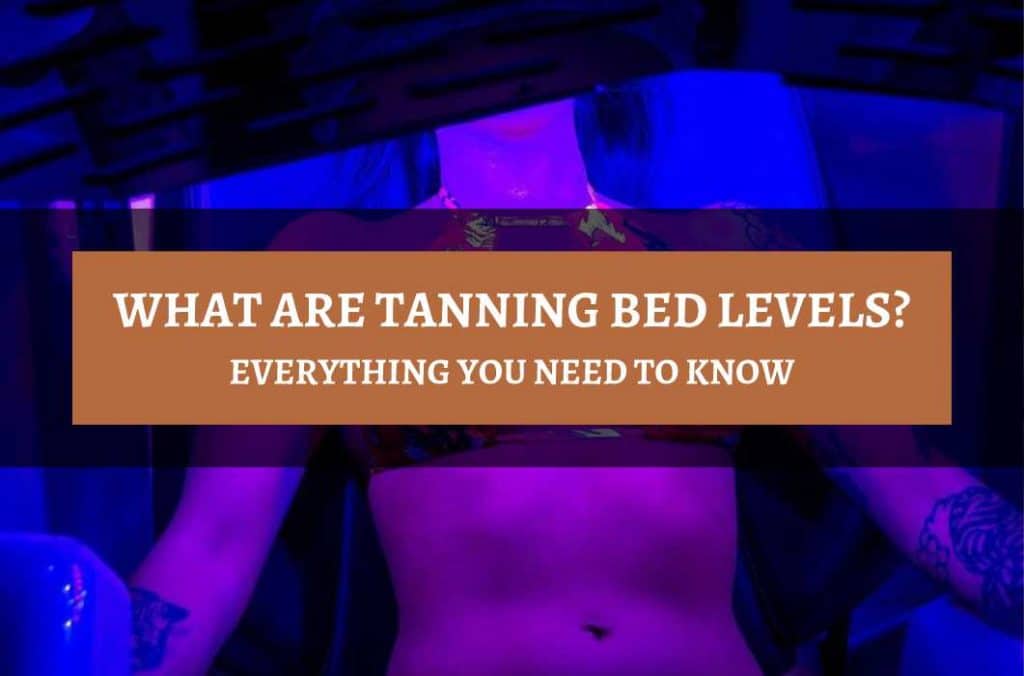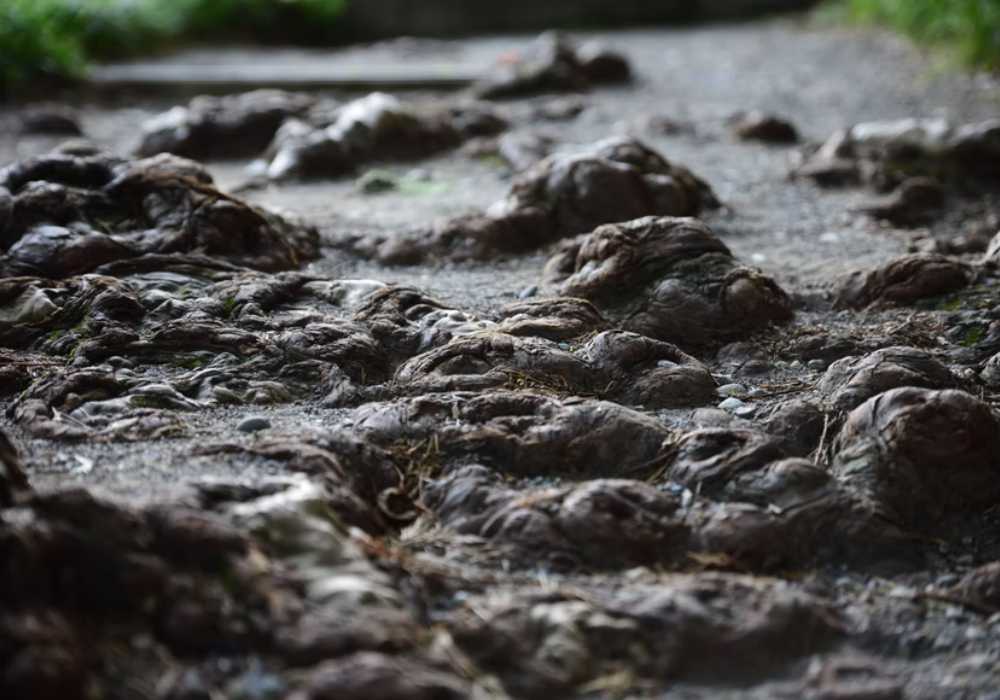As an Affiliate, We may earn a commission that doesn't cost you extra from qualifying purchases using links in this post. It helps keeps this blog running.
Have you ever wondered how tanning bed levels work? It seems like it’s some kind of dark magic, but in reality, there is a science to it.
The tanning industry has a system in place to categorize the different levels of tanning beds available on the market. This system is designed to help consumers understand the capabilities of each type of tanning bed and make an informed decision about which one is right for them.
In this post, we’ll explore the different levels of tanning beds and what they can do for your skin. We’ll also cover some safety tips to keep in mind when using a tanning bed.
Are you ready to learn all about it? Let’s get started!
Read A Specific Section
What Do Different Tanning Bed Levels Mean And Do They Make A Difference?

Most tanning beds will have different intensity levels, which will be determined by the number of bulbs in the bed as well as their wattage. So, the higher the level, the more intense the tan will be.
The level will also be affected by how close the tanner is to the bulbs. Different skin types will react differently to tanning, so it’s important to know your skin type and what level will work best for you. If you’re new to tanning, it’s always best to start with a lower level and work your way up.
Some tanning beds will have a face tanner, which is usually a lower level than the rest of the bed. This is because the skin on your face is typically more sensitive than the skin on your body.
The level of tanning bed you use can make a difference in how quickly you tan, how dark you get, and how long your tan lasts. It’s important to find the right level for your skin type to get the best results.
How To Determine The Levels Of A Tanning Bed?
When you’re looking for a tanning bed, you’ll want to determine the levels of tanning beds. Because the higher the level, the more intense the tan will be.
So, the level of a tanning bed can be determined by
- The number of bulbs in the bed
- The wattage of the tanning bulbs
- The tanning bed manufacturer
- The price
- The level will also be affected by how close the tanner is to the bulbs.
Different skin types will react differently to tanning, so it’s important to know your skin type and what level will work best for you. If you’re new to tanning, it’s always best to start with a lower level and work your way up.
Some tanning beds will have a face tanner, which is usually a lower level than the rest of the bed. Different skin types will react differently to tanning, so it’s important to know your skin type and what level will work best for you. If you’re new to tanning, it’s always best to start with a lower level and work your way up.
What Are The Different Categories Of Tanning Beds?
There are three general categories of tanning beds:
- Low Pressure: Low-pressure tanning beds emit mostly UVA rays, with a small amount of UVB rays. This type of tanning bed ranges from level 1-2 and they are considered the safest because it does not produce the kind of intense rays that can cause skin damage. Low pressure tanning beds are often used in tanning salons because they provide a more gradual tan that is less likely to cause burns or other skin damage.
- Medium Pressure: Tanning beds emit a higher level of UVB rays than low pressure tanning beds, but they still produce mostly UVA rays. This type of tanning bed ranges from level 3-4 and is considered to be more effective than low pressure tanning beds because the increased level of UVB rays accelerates the tanning process. Medium pressure tanning beds are often used by people who want to achieve a deep tan in a shorter amount of time.
- High Pressure: High pressure tanning beds emit mostly UVB rays, with a small amount of UVA rays. This type of tanning bed ranges from level 5-7 and are considered to be the most dangerous because the high level of UVB rays can cause burns, skin damage, and even skin cancer. High-pressure tanning beds should be avoided if possible, but some people still use them because they produce the deepest tan possible in the shortest amount of time.
Within these categories, there are subcategories that further define the capabilities of the tanning bed.
Tanning bed categories are important to understand because they can affect your health. Be sure to consult with a professional before using any tanning bed to ensure that you are using one that is right for your skin type.
What Are Tanning Bed Levels And What Do They Mean?
Tanning beds are equipped with different levels that offer various tanning intensities. Most tanning beds have four levels, but some may have up to 6 or 7 with level seven being the most intense. The higher the level, the more intense the tan will be. The level you choose will depend on your skin type and how quickly you want to tan so it’s important to choose the right level for your skin type and desired tan.
For example, if you have sensitive skin, you’ll want to start with a lower level and work your way up. Those with darker skin tones should also start at a lower level to avoid over-tanning and damaging their skin as this will help you avoid any irritation or burns.
On the other hand, if you’re looking for a quick tan, you can go for a higher level. Remember that this might also increase your risk of developing skin cancer.
@sandalstanningtroy Our Level 4 High-Pressure😉I swear this bed has you TWO shades darker RIGHT after you step out!!😍 #sandalstanning #troymichigan #besttanningsalon #Totinos425 #tanningsalon #tanningbeds #tanninglotion #fyp ♬ SLOW DANCING IN THE DARK – Joji
Now that we know what tanning bed levels are, let’s take a closer look at each one.
Different Tanning Bed Levels
| Tanning Bed Level | Tanning Bed Pressure | Tanning Bed Description |
|---|---|---|
| Level 1 Tanning Bed | Low Pressure | Level one tanning beds are the lowest level and emit a lower amount of UVA rays, with 3,200 bed wattage, built-in cooling fan, and highest UVB, making them ideal for people who want to gradually tan, those with sensitive skin, or who are new to tanning. |
| Level 2 Tanning Bed | Low Pressure | Level two tanning beds are a little stronger than level one with around 6,000 bed wattage, higher UVA, and lesser UVB. They mostly come with 400w facial lamps, and a built-in cooling fan, and are perfect for those who want to build up a tan gradually as it emits a moderate amount of UV rays. |
| Level 3 Tanning Bed | Medium Pressure | Level three tanning beds are the strongest and emit UV rays with the highest amount of intensity among the other lower level beds. Level 3 beds come with 10,000 bed wattage, higher UVA, and lesser UVB than level 1 and 2 beds. They also mostly come with 400w facial lamps that can be controlled by the client and a built-in air conditioning unit. These beds are typically used for people who want to tan quickly or have less sensitive skin. |
| Level 4 Tanning Bed | Medium Pressure | Level four tanning beds are the second strongest and emit UV rays that are even more intense than level three tanning beds with around 12,000 – 13,000 bed wattage, higher UVA, and lesser UVB than level 2 and 3 beds. They mostly come with 600w facial lamps and shoulder lamps that can be controlled by the client and a built-in air condition unit. They should only be used by people who have experience tanning or have less sensitive skin that can handle the high intensity of UV rays. |
| Level 5 Tanning Bed | High Pressure | With around 15,000 – 16,000 bed wattage, higher UVA and lesser UVB than level 3 and 4 beds. They mostly come with 1000w facial lamps and shoulder lamps that can be controlled by the client, a built-in air condition unit, and sometimes a misty breeze for your comfort. Level five tanning beds are the third strongest and are typically used by professional tanners as they emit UV rays that are even more intense than level four tanning beds. |
| Level 6 Tanning Bed | High Pressure | Level six tanning beds are the fourth-strongest and typically not found in most tanning salons as they are too strong for the average person. With around 19,000 – 20,000 bed wattage, higher UVA, and lesser UVB than level 4 and 5 beds. They mostly come with 1000w facial lamps and shoulder lamps that can be controlled by the client, a built-in air condition unit, and sometimes a misty breeze for your comfort. They emit UV rays that are similar to level five tanning beds but with a slightly higher intensity. |
| Level 7 Tanning Bed | High Pressure | Level seven tanning beds are the strongest and typically not found in most tanning salons as they are too strong for the average person. With around 20,000 – 22,000 bed wattage, higher UVA, and lesser UVB than level 4 and 5 beds. They mostly come with 1000w facial lamps and shoulder lamps that can be controlled by the client, a built-in air condition unit, a built-in misty breeze, a built-in music system, and voice-guided instructions, all for your comfort. They emit UV rays that are similar to level six tanning beds but with a slightly higher intensity. |
Now that you know all about tanning bed levels, so, what tanning bed level is right for you? If you’re new to tanning or have very sensitive skin, start with low pressure level 1 to 2 tanning bed. If you want to tan quickly, or have less sensitive skin, move up to a level 3 to 4 tanning bed.
Always be sure to choose the right tanning bed level for your skin type and desired tan. Remember to start slowly and gradually increase your level as needed. And always consult with a professional before using any tanning bed to ensure that you are using one that is right for your skin type.
What Level Tanning Bed Should You Start With?
Most tanning beds have different levels, or strengths, that you can choose from. The level of tanning bed you should start with depends on a few factors such as:
1) Your Skin Type
Your skin type is the most important factor to consider. If you have very fair skin, you will need to start with a lower-level tanning bed. This is because fair skin burns more easily and is more sensitive to UV rays. People with darker skin can start with a higher-level tanning bed.
2) How Often You Tan
Another factor to consider is how often you tan. If you are new to tanning, you will need to build up your tan gradually. This means starting with a lower level tanning bed and working your way up.
3) What You Aim To Achieve
Finally, consider your tanning goals. If you just want a light tan, you can start with a lower-level tanning bed. If you want a deep tan, you will need to start with a higher level tanning bed.
If you are unsure about what level of tanning bed to start with, talk to a professional at your local tanning salon. They will be able to help you choose the right level for your skin type and tanning goals.
Frequently Asked Questions
Will 5-6 minutes on a sunbed do anything?
Although it depends on the level of the tanning bed. However, spending 5-6 minutes in a level 1-3 sunbed is unlikely to give you a tan, especially if you have fair skin.
What is the best tanning bed level for me?
The answer to this question depends on your skin type. If you have pale skin, you will want to start with a lower-level tanning bed in the range of levels 1-4. If you have darker skin, you can start with a higher-level tanning bed from the range of level 4 to 5.
How long should I stay in a tanning bed?
Again, this depends on the level of the tanning bed. For most people, that have very fair skin, you may need to start with a lower level tanning bed by spending 5 minutes per session and work your way up as needed.
How long can you go in a Level 3 tanning bed?
You should only stay in a Level 3 tanning bed for no more than 10-12 minutes per session because this level tanning bed emits high levels of UV rays.
What is the highest tanning bed level?
The highest tanning bed level is a Level 6 or 7 tanning bed. These tanning beds are very powerful and emit high levels of UV rays, so it is important that you do not stay in them for too long. The recommended time to stay in a Level 6 tanning bed is no more than 8 to 10 minutes per session.
Are Level 5 tanning beds safe?
Yes, Level 5 tanning beds are safe when used as directed. However, it is important to remember that all tanning beds emit UV rays, so it is important to follow the recommended time limits for each level.
How long should I tan in a Level 5 tanning bed?
The recommended time to tan in a Level 5 tanning bed is no more than 12 minutes per session. This is because the UV rays emitted by these tanning beds are very strong and can be harmful if you stay in them for too long.
What is the difference between a Level 4 and Level 5 tanning bed?
The main difference between a Level 4 tanning bed and a Level 5 tanning bed is the intensity of the UV rays emitted. Level 4 tanning beds emit lower levels of UV rays than Level 5 tanning beds.
What is a tanning bed base tan?
A tanning bed base tan is when you spend a short amount of time in a tanning bed to build up a small amount of color before spending more time outdoors in the sun. This helps to prevent your skin from burning when exposed to the sun’s UV rays.
What level of tanning bed gets you the darkest?
The level of tanning bed that gets you the darkest is Level 6 or 7. This level of tanning bed emits the most UV rays, which will give you the darkest tan possible. However, it is also the most dangerous level of tanning beds and can increase your risk of skin cancer.
What are tanning bed eye protection levels?
The tanning bed eye protection levels indicate the amount of UV light that is blocked by the eyewear. The levels range from 0 to 4, with 4 being the highest level of protection. It is important to wear proper eye protection when using a tanning bed to protect your eyes from the UV rays.

I’m Akin, your dedicated Editor-in-Chief and a fervent skincare enthusiast. Self-care is my true passion, and each year, I embark on a thorough exploration of self-tanning products, ranging from lotions to mists. This forms the bedrock of our commitment to delivering top-notch information to our readers. My extensive research and precise product rankings empower you to make informed decisions tailored to your specific skincare needs.
Unlock the Secrets to Achieving Your Ideal Tan with This Comprehensive Checklist



